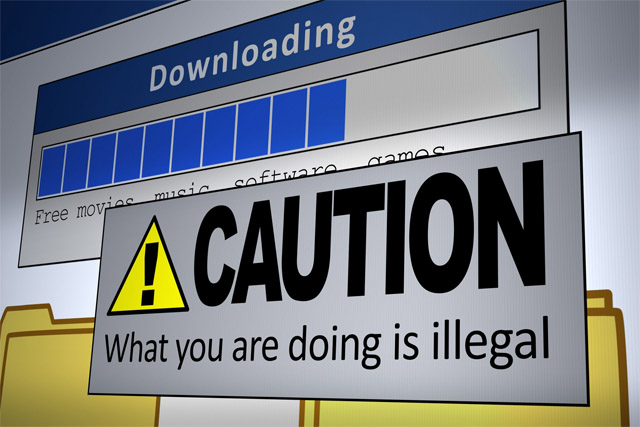
What is a torrent file? How do you use it? Is it safe? Is it legal? Torrenting can be a complicated process, so before we get into the meat of how to download and use torrent files safely and legally, let’s cover some important terminology.
Updated 3-3-2016 by Brendan Hesse: This article received a massive overhaul to provide clearer, more detailed information regarding torrent files, how to download them, and how the process works.
What is a Torrent?
If you’ve dabbled at all in torrent downloading, you’ve almost certainly come across the terms “seed,” “peer,” and “leech.”
A seed (or seeder) is someone who is sharing the file; the more seeds, the more potential locations to download the file. Someone who is downloading the seeded file is a leech. The more leeches a file has versus seeds will make the file download slower, as there are more people accessing the file. Furthermore, if no one is seeding, then no one can download. The entire group of seeders and leeches are your peers — hence why BitTorrent is referred to as “peer-to-peer” file sharing. You collect a file directly through someone else, rather than downloading from a server. This cluster of peers is also referred to as a “swarm,” who are all uploading and downloading the same file.
How exactly does this work? Essentially, the file is broken up into pieces, with each piece being downloaded and compiled by the download program. After you’ve downloaded enough data, you will begin to simultaneously upload the parts of the file you’ve downloaded, thereby increasing the download speed for your other peers in the swarm. Download clients give preferential treatment to those who allocate more bandwidth to uploading, and who are seeding files. Basically, the more you share, the more you receive.
Another term you may have come across is “tracker.” A tracker is a server that keeps track (go figure) of all peers in a swarm, but does not host any part of the file. Instead, a tracker acts as something of a traffic cop, directing peers to available file locations. Your download client will connect to this server as instructed in the .torrent file. There is such a thing as “trackerless” downloading, which we will cover more in a moment.
Installing a BitTorrent client and downloading files

In order to open a .torrent file and begin downloading, you need a download client to handle the file. In the past, this guide has featured numerous torrent download clients, but the current best options are qBittorrent, Transmission, and Deluge.
These three programs have some minor differences, but they’re generally very similar. They’re all open source, and all three support various operating systems, including Windows, OSX, Freebsd, and various Linux Distros. Best of all, they are all devoid of annoying ads, useless “special offers,” or malicious bloatware.
Once you’ve settled on which torrent client you’ll be running, download and install it. An obvious step, yes, but having an installed torrent program is important because it enables you to download torrents via magnet links. You can always download .torrent files and open them with your downloader, but magnet links have been slowly overtaking .torrent files in terms of popularity and use.
Downloading a torrent

After installing a downloader client, such as qBittorrent, you’ll need files to download. There are many website you can use to download .torrent files or access magnet links, the most well-known being The Pirate Bay. Others, such as Kickass torrents, exist, but they usually lack the user base of The Pirate Bay. There are also private trackers, such as Demonoid, that require an account to access.
A quick search through these web will probably help you find what you’re looking for, but take care before downloading as some files can be fake. Check the comments on the file’s download page as users will report fake or broken files. When you open the .torrent, double check the file you’re downloading — if you’re expecting a .rar file, and see an .exe, it’s not the file you’re looking for and likely is a virus. Cancel and delete the download immediately. We will cover further safety tips in later sections.
If the torrent looks legitimate, the download page will likely list two methods for downloading: .torrent or a magnet link. Considering there are two download methods, you might be wondering what the difference is between the two.
.torrent files can essentially be described as treasure maps. These tiny files contain the locations for the various parts of files. Your download client will use the file to find the various parts of whatever it is your downloading, download the parts, the compile them into the file.
Magnet files work much the same way, but are a direct line connecting the downloader to each file, instead of needing to follow a “map” as provided by a .torrent file. There are further, more technical differences that have to do with tracker servers and DHT procedures, but we’ll leave those alone for now.
If your goal is simply to download a file with a BitTorrent client, both methods work great. Magnet links take a slight bit longer to begin due to establishing direct connections, but they also remove the step of downloading and opening a .torrent file. Regardless of the acquisition method, once a download begins, your speeds will be dependent on the swarms seed-to-leech ratio, and your bandwidth.
Once the download has completed, you will have access to the file, and you will begin to seed the file. While seeding does up your priority for downloads, it also increases your risk for being caught if you’re seeding copyrighted files. If you do not wish to seed you can either completely close your download program, or you can delete the .torrent, usually by right clicking the seeding file in your client and selecting “delete .torrent.” Be sure not to delete the data, however, or you’ll need to re-download the entire file.
Safety and legality of downloading torrents
Safety
As torrenting is the preferred method for piracy, torrent sites have become hives of scum and villany. Or, at least, viruses, malware, and annoying pop-up ads for adult websites. When you’re jumping into the pirate-filled waters, be sure you’re well equipped to defend yourself.
Virus and adware protection are highly recommended, and if you need help finding good antivirus for your computer, our guides for both Windows 10 and Mac will provide you with a defensive arsenal against potential dangers.
If your Antivirus software includes browser protection, be sure to enable it. If not, find a suitable program to keep you safe while browsing. At the very least, enable any and all malware, phishing, and malicious URL protection provided by your web browser.
Above we mentioned you should double check the download page for whatever files you’re downloading. If someone calls the file out as fake, incomplete, or broken, don’t download it. Moreover, files from trusted uploaders on the Pirate Bay will display a pink skull and crossbones to mark its legitimacy. Favor those listings (but still execute caution).
Finally, many websites that host torrents run ads for adult websites, dating site, free-to-play games, or annoying “special offers,” almost all of which are unsuitable for viewing at work, so enabling an adblocker is a smart when searching these sites (and you shouldn’t be torrenting at work anyway. Not only is likely to land you in hot water with your employer, you’ll be taking up tons of company bandwidth accidentally seeding Thom Yorke’s Tomorrow’s Modern Boxes for a year).
Is this legal?
Downloading via a torrent is not inherently illegal. Torrenting is simply an effective means for users to swap files directly. Often, completely legal files are delivered through torrents. A prime example is Linux distros, which are usually downloaded via torrent due to their large sizes. Sometimes, filmmakers, musicians, or game developers will distribute their work for free through torrent files. Well known game development studio, Blizzard, uses a modified BitTorrent client to deliver large updates and game files via peer-to-peer sharing.
Still, torrent files have a reputation for being used as a means for piracy, and, to be sure, they’re the main method for piracy. Their peer-to-peer nature means you can obtain large files without having to deal with uploading or downloading from a server, so otherwise copyrighted material becomes easily available. That direct access to files doesn’t mean you can’t get caught, however.
Magnet links and .torrent files alike can be tracked, and some organizations will report such activity to your ISP (hence why HBO is able to release numbers on how many times the latest Game of Thrones episode was pirated). Downloading is believed to be less of an offense than seeding, since by seeding a file you’re offering it up for others to download, but you can still get caught by your ISP simply for downloading.
Consequences can range from your ISP tracking your activity and throttling your internet speeds, to incredibly steep fines. Capitol v. Thomas, a particularly high profile case, resulted in a 1.9 million fine for sharing just 24 songs. There are some procedures you can use to keep your activity secret, such as VPNs (Virtual Private Networks) that will obscure your IP address activity and provide you with some cover against tracking by your ISP. But really, the safest course of action is to just not engage in piracy at all.
Editors' Recommendations
- How to take a screenshot on a Mac
- How to clean a laptop screen without scratching it
- How to make a GIF from a YouTube video
- How to add a signature in Gmail on desktop and mobile
- How to buy a gaming PC for the best performance and value




